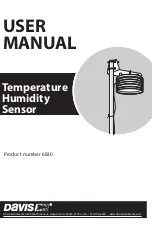
8-1
Routine Maintenance and Repair
650G AC Drive
Chapter 8
R
OUTINE
M
AINTENANCE
&
R
EPAIR
Routine Maintenance
Periodically inspect the drive for build-up of dust or obstructions that may affect ventilation of
the unit. Remove this using dry air.
Repair
There are no user-serviceable components.
IMPORTANT:
MAKE NO ATTEMPT TO REPAIR THE UNIT - RETURN IT TO PARKER HANNIFIN
MANUFACTURING LIMITED.
Saving Your Application Data
In the event of a repair, application data will be saved whenever possible. However, we advise
you to copy your application settings before returning the unit.
Returning the Unit to Parker
Please have the following information available:
•
The model and serial number - see the unit’s rating label
•
Details of the fault
Contact your nearest Parker Service Centre to arrange return of the item.
You will be given a
Returned Material Authorisation.
Use this as a reference on all paperwork
you return with the faulty item. Pack and despatch the item in the original packing materials; or
at least an anti-static enclosure. Do not allow packaging chips to enter the unit.
Disposal
This product contains materials which are consignable waste under the Special Waste
Regulations 1996 which complies with the EC Hazardous Waste Directive - Directive
91/689/EEC.
We recommend you dispose of the appropriate materials in accordance with the valid
environmental control laws. The following table shows which materials can be recycled and
which have to be disposed of in a special way.
Material
Recycle
Disposal
metal
yes
no
plastics material
yes
no
printed circuit board
no
yes
The printed circuit board should be disposed of in one of two ways:
1.
High temperature incineration (minimum temperature 1200
°
C) by an incinerator authorised
under parts A or B of the Environmental Protection Act
2.
Disposal in an engineered land fill site that is licensed to take aluminium electrolytic
capacitors. Do not dispose of in a land fill site set aside for domestic waste.
Packaging
During transport our products are protected by suitable packaging. This is entirely
environmentally compatible and should be taken for central disposal as secondary raw material.
















































